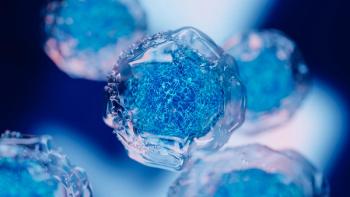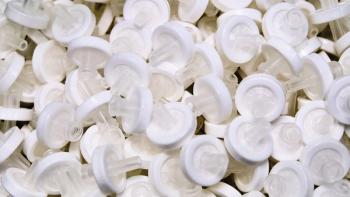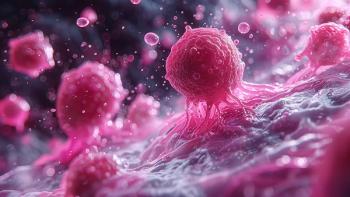
- BioPharm International, May 2022 Issue
- Volume 35
- Issue 5
- Pages: 28–30
Automating Cell Harvesting for Cell Therapies
Some progress has been made, but improvements are needed when harvesting cells for cell therapies.
Successful cell harvesting requires high cell-recovery levels, minimal strains placed on the cells, high cell viability, and short process times with few disruptions. These attributes must be met whether cell-culture is performed in flatware or bioreactors and whether a process is manual or automated. Of course, different platforms may have specific requirements for performing harvest-related activities that may differ from others, but fully automated platforms have the advantage of integrating the harvest step within the process, thereby bypassing the need for manual intervention. There are challenges to automating cell harvest, however, and in some cases more manual operations may be preferred.
Need for high cell titers
One of the biggest challenges to automating cell harvest is the high cell densities of cell cultures produced for cell-therapy applications. “Because of the need to supply sufficient cells for dose-escalation studies and the requirement for multiple therapy administrations per patient, high-cell-titer processes are desirable when manufacturing either autologous or allogeneic cellular therapies,” says Tamara Laskowski, head of clinical development for Lonza Personalized Medicine.
High cell densities can be challenging because of the presence of impurities such as cellular debris, DNA, and proteins that cause materials to become “sticky” and form clumps. Denser cell layers that settle are also difficult to fully re-suspend prior to harvest. “To mitigate these issues and minimize cell losses, some processes may require higher wash volumes at harvest, thereby requiring additional downstream steps to reach concentrations needed for final formulation,” Laskowski observes.
Suspension cell-culture preferred
In general, suspension cells are preferred because there is no need to dissociate the cells from the substrate prior to harvest, as is the case with adherent cells. This advantage can be obscured, however, by the issues posed by high cell densities as described above, Laskowski notes, because additional steps may be required to ensure the high recovery of viable cells. “Cell wash and filtration to remove impurities and cellular debris may be options to mitigate these issues, but care must be taken to ensure that the approaches used do not compromise cell viability and overall recovery,” she says.
Adherent cells present their own difficulties. The need to use dissociation agents requires a subsequent wash step, leading to lengthier, multi-step harvesting processes to ensure high recovery efficiency, according to Laskowski. “It is important to also consider that longer, multi-step harvest processes can be disruptive and may have an impact on cell viability, total cell recovery, and the overall quality of the cell product,” she notes.
Because cell harvesting protocols can involve various activities that result in longer process times, Laskowski emphasizes that monitoring cell count and viability is crucial, especially when also considering the potential negative effects of fluid shear stress on cell growth and behavior. She adds that real-time measurements of pH, dissolved oxygen, and temperature are important to ensure proper conditions are maintained during cell harvesting.
Continuous upstream processes can be beneficial
Different processes may have specific requirements depending on the cell therapy modality, and factors that impact suspension and adherent cell cultures may present challenges for automated harvesting. Continuous cell-culture processes may in some cases facilitate automation of the cell-harvest step.
“A continuous process may be an advantageous approach to mitigate concerns related to the accumulation of cell debris and overall cell health, given that cyclical removal of spent media and supplementation with fresh medium restores nutrient availability and reduces exposure to lactate, thus supporting higher cell viability,” explains Laskowski.
Autologous manufacturing a challenge
The need to produce personalized, or autologous, cell therapies is one of the general challenges facing cell-therapy manufacturers. “In the biopharmaceutical industry, manufacturers have become very good at scaling up processes from a small tank to larger tanks. That is driving the interest in allogeneic, or off-the-shelf cell therapies,” states Geoff Hodge, CEO of SOTIO Biotech US, a developer of chimeric antigen receptor (CAR) T-cell therapies.
Part of the point of allogenic treatments, Hodge says, is the ability to scale up suspension cell-culture processes using equipment similar to that used to produce more conventional biologics such as recombinant proteins and monoclonal antibodies. “If this type of process is successful, then the culture can be run through a centrifuge or tangential-flow filters and be washed,” he adds.
For autologous therapies, one approach to scaling out is finding the best piece of equipment for each part of the process—cell growth, harvest, washing, formulation, etc.—and stringing them together, according to Hodge. If new technology comes along for any one step, it can be introduced, and when a piece of equipment breaks it can be easily replaced.
While this approach affords great flexibility, it involves a lot of manual manipulations of the cells. “There is definitely a trade-off; these types of processes are very labor intensive, complex operations with a lot of risk,” Hodge says. He also points out that automation is difficult because there are so many different pieces of equipment that need to work together.
It is possible, notes Laskowski, that cell harvest can be performed separately, allowing cell cultures generated through manual processes to undergo automated downstream processing and concentration for final formulation. “There are technologies on the market that provide a closed platform for cell processing and cell harvest and can be added to specific stages within a given process. A potential downside is that this modular approach introduces the need for user intervention which may, in some cases, lengthen the overall process as well as pose a risk to product sterility,” she observes.
Integrated systems provide advantages and disadvantages
Another approach is to integrate the cell culture and harvest steps within a closed operation. Various systems on the market provide platforms for cell processing, harvest, and product formulation. These technologies, according to Laskowski, differ in whether they are fully automated—with upstream and downstream processing capabilities—or are designed to serve as modular additions to existing pipelines. “There is a greater advantage to fully closed and automated systems, which significantly reduce the need for manual intervention, decrease variability, and minimize concerns with product sterility,” she contends.
Examples of automated systems include Miltenyi Biotec’s CliniMACS Prodigy, which allows users to perform cell activation, transduction, and harvesting in a completely closed system, and Lonza’s Cocoon, a customizable, closed, end-to-end cell therapy manufacturing platform. Industry consortia such as Autostem are also developing technologies for the automation of cell-therapy manufacturing.
The all-in-one devices available today provide some advantages, according to Hodge, even though they are not quite at the “push-a-button-and-walk-away” stage that will ideally be reached one day. “They definitely take a lot of the labor out of the process—and with it some of the risk of making mistakes and contaminating baches,” he says. There is arguably a cost-of-goods savings, despite the fact that the custom-made single-use components are very expensive.
There are disadvantages, too, Hodge continues. “The devices on the market today have limited working volumes that are suitable for some indications, but for therapies developed to treat solid tumors, much larger numbers of cells are required, and producing those quantities can be challenging for these instruments,” he explains.
Complete dependency on a single vendor for complex custom parts is another negative for the automated devices. “Being 100% dependent on a single supplier with no possibility for substitution of components is a difficult place to be with respect to security of supply, quality, and pricing,” Hodge says. Users are also dependent on the supplier to keep up with innovations in the field and have to wait for the vendors to decide when they will integrate new technology into their systems.
The complexity of the all-in-one-devices is a concern for Hodge’s colleague, Rachel Yao, who is associate director of technical operations for SOTIO. “Training for new operators is quite extensive, and it takes time for them to be able to perform cell washing and harvest in a robust manner using this type of equipment, even though most of the actual operations are automated,” she says.
That is because the learning curve for people just getting started is very steep, particularly with respect to the highly specialized single-use tubing kits or sets the different vendors provide. “There is still a lot of manipulation of the kits required and numerous setup steps to complete in order to ensure that the automated process runs in a robust way,” Yao explains.
If anything goes wrong with these complex all-in-one devices, Yao adds that it is a laborious process to recover. “Most of the initial training focuses on what operators need to do to make sure the process proceeds correctly. Unless there are operators that are really experienced with these instruments and have ideas about how to get the problem with the complex tubing sets resolved somehow, downtime can be significant and costly,” she observes.
Another issue for Hodge is the fact that more than 90% of the time involved in a cell-therapy manufacturing process can be taken up by the cell-culture step. All of the extra equipment in all-in-one devices is sitting idle during that time.
Sometimes manual solutions are still best
All of the various concerns with the all-in-in devices means that many different approaches are employed for automation of cell harvesting by cell-therapy developers, according to Yao. “For some simple processes, we elect to keep things more manual.”
For the cell-culture step, for instance, using the all-in-one devices for lengthy expansion phases means the expensive and complex equipment is serving as a “glorified” incubator and taking up more space than necessary, according to Yao. “That can get extremely expensive when manufacturing multiple batches of material for clinical trials. It can be much more effective to do the cell culture manually with separate biocontainers that are placed into a single incubator.”
Such a process can be combined with harvest and wash steps that are automated. She does note, however, that the expense of automation devices must be supported by the end product, and here again in some cases it can be more cost-effective to do them manually.
Area of continued development
Cell harvesting and subsequent product formulation and preservation are areas of continued development in the field, Laskowski stresses. “We and others are cognizant of the current market needs and are working on strategies to address these needs,” she says. “Considerations pertaining to improved cell recovery from high-density cell cultures, reduced processing time, product concentration, and final fill-and-finish may play a role in the design of next-generation technologies,” Laskowski adds. Moreover, she believes integration of analytics at the harvest step may enhance product characterization and potentially expedite product release.
For Yao, the key goals should be simplification and increased flexibility of automation solutions for cell therapy manufacturing across the board and including cell harvest. “When I consider the use of a particular instrument, device, or system, a major consideration in addition to cell recovery, count, and viability, is the robustness of the process—how much can actually be hands off, how easy it is to ‘break’ a process, and how easy it is to recover if a problem occurs,” she explains.
Thinking about the bigger picture, Yao suggests that device developers focus on finding ways to allow for the completion of multiple steps in a single vessel without having to remove the material from the vessel. “That is an idea the field hasn’t wholly embraced yet, but it would alleviate some cost concerns.”
Along those lines, for autologous therapies, Hodge notes that, other than scaling up or scaling out—running many batches in parallel—the industry should explore the idea of implementing automation solutions for cell harvest and washing (and other operations) of multiple batches at a time. “This approach has already been implemented in many industries and results in things moving in a high-throughput manner that would increase efficiency and reduce cost,” he concludes. In such a new area of manufacturing there are multiple opportunities to enhance and optimize current practices, which makes this a field to keep an eye on for future advances.
About the author
Cynthia A. Challener, PhD, is a contributing editor to BioPharm International.
Article details
BioPharm International
Volume 35, Number 5
May 2022
Pages: 28–30
Citation
When referring to this article, please cite it as C.A. Challener, “Automating Cell Harvesting for Cell Therapies,” BioPharm International 35 (5) (2022).
Articles in this issue
over 3 years ago
Emerging Therapies Face Development Hurdlesover 3 years ago
Emerging Plant-based Platform for Biomanufacturingover 3 years ago
An Evolving Approach to Drug Deliveryover 3 years ago
Addressing the Training Gap for Single-Use Technologiesover 3 years ago
A Robust Quality Culture Benefits Allover 3 years ago
Addressing Limitations of Sterility Testingover 3 years ago
Perspectives on Process Analytical Technologyover 3 years ago
Data Integrity as Current Good Manufacturing Practiceover 3 years ago
Using a Modeling Approach to Preclinical StudiesNewsletter
Stay at the forefront of biopharmaceutical innovation—subscribe to BioPharm International for expert insights on drug development, manufacturing, compliance, and more.





